it may very well be of interest to you on the innerweb, especially if you've never been out fossil hunting before.
before i start, just a fun factiod: the fancy palaeolotogic term for fossil hunting is prospecting. prospecting is just walking around looking on the ground for either the fossils themselves or traces of them being around somewhere nearby.

prospecting for fossils can be a very hard thing. especially when you look at the amount of ground i have to potentially look over! just in this picture i could spend all week going up and down the visible slopes searching for fossils.
however for the sake of looking for lost quarrys, i need to cover a lot of ground and get to a lot of good vantage points to look for potential landmarks present in the photos of francis slate. so fossil hunting has to be efficient and doable while i'm moving between these lookout points, or i just can't afford to look for fossils.
i don't want to waste this opportunity wandering the badlands. there are tons of new fossils just sitting there to be found, but i also want to find evidence of slate. so i'm thinking why not combine both types of exploration into this one expedition. fortunately for me there is a way to do both too!

by keeping all my prospecting at the baseline of the badland's hills i can get around easily to my various vantage points, and yet do a pretty effective sweep for fossils inbetween them.
wandering in coulees like this one above (again coulee is the local term for natural drainage whether it be a tiny groove in the side of a hill or a huge valley) i can find fossils that are even at the very top of hill!
_
which might seem like me wishfully thinking. as there is no way for me to see fossils all the way at the top. so i can't be claiming to watch for them as i walk by. rather the fossils let me know there up without me having to look higher than my feet!
_
 here is a bunch i found just today wandering a medium size coulee. this was the best clutch i'd found yet (hence the post).
here is a bunch i found just today wandering a medium size coulee. this was the best clutch i'd found yet (hence the post)._
i was really excited. finding one of these can mean you're just metres away from a HUGE find!!!
 this is exactly the sort of fossil batch i'm looking for. you'll probably recognize it from my recent palaeo challenge #2 (which no one got quite right... so here is the right answer).
this is exactly the sort of fossil batch i'm looking for. you'll probably recognize it from my recent palaeo challenge #2 (which no one got quite right... so here is the right answer).
 this is exactly the sort of fossil batch i'm looking for. you'll probably recognize it from my recent palaeo challenge #2 (which no one got quite right... so here is the right answer).
this is exactly the sort of fossil batch i'm looking for. you'll probably recognize it from my recent palaeo challenge #2 (which no one got quite right... so here is the right answer)._
the bits i'm interested in are the white and/or orange ones.
 to make sure they're what i want, i pick one up for closer inspection. once you have some experience, you can eyeball fossils that are on the ground while you are standing straight up, but even a pro like me will often need to bend over for a closer look.
to make sure they're what i want, i pick one up for closer inspection. once you have some experience, you can eyeball fossils that are on the ground while you are standing straight up, but even a pro like me will often need to bend over for a closer look.
 just as i'd hoped for, dinosaur bone! however if i didn't pick it up there was a chance it could have been petrified wood (or even a REALLY annoying ironstone!). however my closer inspection confirms this clump of fossil were all pieces of dinosaur bones.
just as i'd hoped for, dinosaur bone! however if i didn't pick it up there was a chance it could have been petrified wood (or even a REALLY annoying ironstone!). however my closer inspection confirms this clump of fossil were all pieces of dinosaur bones.
now i should have realized that unless you have experience hunting for fossils my palaeo challenge is EVEN harder without a close up look at the site. i took the picture for the challenge while standing up, so the details of those bone fragments were lost.
 these two pieces are perfect. not only do they preserve the smooth outer bone shell, with its "wood like" grain (note i said wood LIKE, fossil woods' grain is not nice perfect straight line like bone funny enough!). on the edges of these chunks in the photo you can make out the bubbly texture of the inner bone marrow.
these two pieces are perfect. not only do they preserve the smooth outer bone shell, with its "wood like" grain (note i said wood LIKE, fossil woods' grain is not nice perfect straight line like bone funny enough!). on the edges of these chunks in the photo you can make out the bubbly texture of the inner bone marrow.
 another common look of broken bits of dinosaur bone is an almost polished look like these pieces here have.
another common look of broken bits of dinosaur bone is an almost polished look like these pieces here have.
 the orange colour that threw a lot of you off in the palaeo challenge was caused by lichens growing on the bone. these algae/fungus hybrids will start to appear on fossils that are exposed on the surface for a while, and will eventually eat them into dirt (literally!).
the orange colour that threw a lot of you off in the palaeo challenge was caused by lichens growing on the bone. these algae/fungus hybrids will start to appear on fossils that are exposed on the surface for a while, and will eventually eat them into dirt (literally!). these of course are just broken bits of bone though. you're no doubt asking "traumador, why are you so excited about them? you already showed and told us about broken dinosaur bones! you weren't primed about it..."
these of course are just broken bits of bone though. you're no doubt asking "traumador, why are you so excited about them? you already showed and told us about broken dinosaur bones! you weren't primed about it..."
 there are a few differences between these and the bone in my first journal entry.
there are a few differences between these and the bone in my first journal entry.
it is that last point that is most important.
 which is what i've found here. their broken bits that have nicely washed down to the bottom of the hill in a snow melt or heavy rainstorm. sure they signify a really broken bone somewhere up the hill (not really worth finding just by itself), but where there is one bone often there are more (especially in the case of a desired complete skeleton!).
which is what i've found here. their broken bits that have nicely washed down to the bottom of the hill in a snow melt or heavy rainstorm. sure they signify a really broken bone somewhere up the hill (not really worth finding just by itself), but where there is one bone often there are more (especially in the case of a desired complete skeleton!).
 hoisting myself up to the bone i looked in to examine it.
hoisting myself up to the bone i looked in to examine it. it may not have been an articulated skeleton i'd found, but it might have been a really nice bonebed!
it may not have been an articulated skeleton i'd found, but it might have been a really nice bonebed! now as i found this bonebed around drumheller i could immediately make a safe guess about the ID of my bonebed's occupants. a closer look at the half broken but still easily identified pulvic bone (that is one of the bones of the hip) confirmed this was a hadrosaur bonebed. most likely edmontosaurus, as most of the bonebeds around drumheller are edmontos.
now as i found this bonebed around drumheller i could immediately make a safe guess about the ID of my bonebed's occupants. a closer look at the half broken but still easily identified pulvic bone (that is one of the bones of the hip) confirmed this was a hadrosaur bonebed. most likely edmontosaurus, as most of the bonebeds around drumheller are edmontos.  sadly there weren't any duplicate bones present on the surface. what means i couldn't find 2 of any one type of bone, such as two left femurs or two right wrist bones etc. if i could have, than i could confirm this was a bonebed with more than one animal present, rather than a disarticulated skeleton (disarticulated meaning the bones are scattered and jumbled from how they were in real life) of just one animal.
sadly there weren't any duplicate bones present on the surface. what means i couldn't find 2 of any one type of bone, such as two left femurs or two right wrist bones etc. if i could have, than i could confirm this was a bonebed with more than one animal present, rather than a disarticulated skeleton (disarticulated meaning the bones are scattered and jumbled from how they were in real life) of just one animal.
 to make sure they're what i want, i pick one up for closer inspection. once you have some experience, you can eyeball fossils that are on the ground while you are standing straight up, but even a pro like me will often need to bend over for a closer look.
to make sure they're what i want, i pick one up for closer inspection. once you have some experience, you can eyeball fossils that are on the ground while you are standing straight up, but even a pro like me will often need to bend over for a closer look.  just as i'd hoped for, dinosaur bone! however if i didn't pick it up there was a chance it could have been petrified wood (or even a REALLY annoying ironstone!). however my closer inspection confirms this clump of fossil were all pieces of dinosaur bones.
just as i'd hoped for, dinosaur bone! however if i didn't pick it up there was a chance it could have been petrified wood (or even a REALLY annoying ironstone!). however my closer inspection confirms this clump of fossil were all pieces of dinosaur bones.now i should have realized that unless you have experience hunting for fossils my palaeo challenge is EVEN harder without a close up look at the site. i took the picture for the challenge while standing up, so the details of those bone fragments were lost.
i'll take you in close so you can see what to look for in the field yourself.
 these two pieces are perfect. not only do they preserve the smooth outer bone shell, with its "wood like" grain (note i said wood LIKE, fossil woods' grain is not nice perfect straight line like bone funny enough!). on the edges of these chunks in the photo you can make out the bubbly texture of the inner bone marrow.
these two pieces are perfect. not only do they preserve the smooth outer bone shell, with its "wood like" grain (note i said wood LIKE, fossil woods' grain is not nice perfect straight line like bone funny enough!). on the edges of these chunks in the photo you can make out the bubbly texture of the inner bone marrow. another common look of broken bits of dinosaur bone is an almost polished look like these pieces here have.
another common look of broken bits of dinosaur bone is an almost polished look like these pieces here have. the orange colour that threw a lot of you off in the palaeo challenge was caused by lichens growing on the bone. these algae/fungus hybrids will start to appear on fossils that are exposed on the surface for a while, and will eventually eat them into dirt (literally!).
the orange colour that threw a lot of you off in the palaeo challenge was caused by lichens growing on the bone. these algae/fungus hybrids will start to appear on fossils that are exposed on the surface for a while, and will eventually eat them into dirt (literally!)._
though they're not restricted to just fossils, it is good prospecting practise to look at heavy concentrations of lichen as they tend to grow quick thickly on bone.
 these of course are just broken bits of bone though. you're no doubt asking "traumador, why are you so excited about them? you already showed and told us about broken dinosaur bones! you weren't primed about it..."
these of course are just broken bits of bone though. you're no doubt asking "traumador, why are you so excited about them? you already showed and told us about broken dinosaur bones! you weren't primed about it..." there are a few differences between these and the bone in my first journal entry.
there are a few differences between these and the bone in my first journal entry._
1. there are lots of bits of broken dinosaur bones together here
_
2. these have not been moved from far away and reburied like my last one.
_
3. rather these are just lying on the surface. which means they've only just been washed down the hill recently.
it is that last point that is most important.
_
the forces of erosion water, ice, heat, cold, wind, and gravity are all constantly wearing away at not only the rocks of the badlands, but also the fossils contained within them. so when a fossil is exposed to the surface, due to the rock that had been isolating it being eroded away, the bone itself will begin to fall apart into small pieces through the same processes that took away the rock.
 which is what i've found here. their broken bits that have nicely washed down to the bottom of the hill in a snow melt or heavy rainstorm. sure they signify a really broken bone somewhere up the hill (not really worth finding just by itself), but where there is one bone often there are more (especially in the case of a desired complete skeleton!).
which is what i've found here. their broken bits that have nicely washed down to the bottom of the hill in a snow melt or heavy rainstorm. sure they signify a really broken bone somewhere up the hill (not really worth finding just by itself), but where there is one bone often there are more (especially in the case of a desired complete skeleton!)._
the best part is these broken bits not only wash to the bottom of the hill where they are much easier for me to find, but if i follow them up the hill they act just like a bread crumb trail to their source. leading me too...
_

whole dinosaur bones!!!
i was very thrilled when, after climbing nearly to the top of a hill, i came up just underneath this bone protruding from the wall.
this is an exciting moment. you could looking at the first visible part of a huge discovery... or at the same time you could be in for a slight let down as it turns out to be just a minor find.
i was very thrilled when, after climbing nearly to the top of a hill, i came up just underneath this bone protruding from the wall.
this is an exciting moment. you could looking at the first visible part of a huge discovery... or at the same time you could be in for a slight let down as it turns out to be just a minor find.
 hoisting myself up to the bone i looked in to examine it.
hoisting myself up to the bone i looked in to examine it._
had i found a complete skeleton?!? or even just a partially articulated bit of bones (articulate being the fancy term for the bones that are together in the way they would have been in the living animal... aka the foot bones connect to the leg bones which themselves connect to the knee bones etc.).
_
articulated at all? no, sadly not this time... so a minor let down there. though i shouldn't be surprised. they say it takes about 200 hours of hunting in the badlands to find even a mediocre articulated site. this was only a few days into my expedition.
_
 it may not have been an articulated skeleton i'd found, but it might have been a really nice bonebed!
it may not have been an articulated skeleton i'd found, but it might have been a really nice bonebed!_
bonebeds are like a garbage dump for fossilized animals. you get only random bones from all sorts of creatures from the prehistoric environment, but seldom do any of the bones came from the same individual animal (and even if they might you can never prove it sadly). they're not great for finding new unknown animals (though it does happen if any of their single bones are truly unique), but bonebeds are great for studying beasts already known to science.
_
for example it was bonebeds, similar to this one, that have helped show that duck bill and horned dinosaurs lived in herds. often we find bonebeds that are dominated by 80-90% of the bones being from a single type of animal. if these animals all died together in such numbers (from dozens to thousands) it only makes sense they were probably living together first before they died.
_
the other neat thing about bonebeds is that sometimes they can go on for kilometres! meaning that if i went and found this same layer in the hills surrounding this one (which used to be connected till the space between the hills eroded away and separated them) i could very well find that the bonebed carries on there, and so forth for dozens of such hills till the bonebed finally stopped...
_
 now as i found this bonebed around drumheller i could immediately make a safe guess about the ID of my bonebed's occupants. a closer look at the half broken but still easily identified pulvic bone (that is one of the bones of the hip) confirmed this was a hadrosaur bonebed. most likely edmontosaurus, as most of the bonebeds around drumheller are edmontos.
now as i found this bonebed around drumheller i could immediately make a safe guess about the ID of my bonebed's occupants. a closer look at the half broken but still easily identified pulvic bone (that is one of the bones of the hip) confirmed this was a hadrosaur bonebed. most likely edmontosaurus, as most of the bonebeds around drumheller are edmontos. _
i'd need to find some skull bones to confirm that, and around the surface there just weren't any to find. so the bones could have been from any one (or more... as bonebeds aren't always just 1 type of animal) of the many known duck bills from the horseshoe formation. check out my dinosaurs of alberta post for more details on that.
_
 sadly there weren't any duplicate bones present on the surface. what means i couldn't find 2 of any one type of bone, such as two left femurs or two right wrist bones etc. if i could have, than i could confirm this was a bonebed with more than one animal present, rather than a disarticulated skeleton (disarticulated meaning the bones are scattered and jumbled from how they were in real life) of just one animal.
sadly there weren't any duplicate bones present on the surface. what means i couldn't find 2 of any one type of bone, such as two left femurs or two right wrist bones etc. if i could have, than i could confirm this was a bonebed with more than one animal present, rather than a disarticulated skeleton (disarticulated meaning the bones are scattered and jumbled from how they were in real life) of just one animal._
a disarticulated skeleton could be a big deal, and be a big discovery. as again it is a skeleton of a whole animal, unlike a bonebed which are just random singular unrelated bones.
_
from what i was seeing though it wasn't going to be a great skeleton, even IF it was one. all i had were many random vertebrae and ribs (like this rib pictured above) which are normally common at both skeletal and bonebed sites. the only really unique bones were that pelvic bone and a ulna (lower arm bone). it also looked like a lot of the inital outcrop had been eroded. meaning if it was a skeleton it was already gone...
_
my money was on a bonebed though. their way more common around here, and the ulna and the pelvic bone seemed a different scale to each other (to me anyway, but i'm no EXPERT... simply a little experienced). that was good news too. even if a huge chuck of the site had eroded out, a bonebed could easily carry on into the hill.
_
i'd report it to the museum, and let someone from there check it out if they were interested.
as sad as it is to say they probably won't be. bonebeds are a dime a dozen around here, and most don't offer anything remarkably different to the rest. that and it takes weeks or months to work a bonebed properly (meaning with the known bonebeds just around drumheller you're looking at about 50-100 years worth of work!).
_
with the number of legitimately interesting and new things potentially out here, it is best for the museum to wait for someone like me to find the better fossils sites, and then spend the time on those instead!
_
at least this find made for a good journal entry at least, but i'll have to catch you on the next one! i'm moving on past this bonebed...


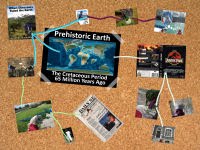
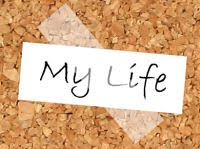

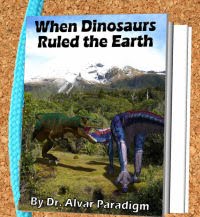


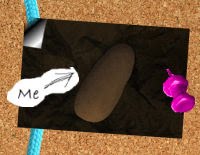





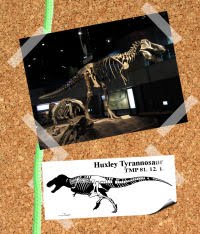








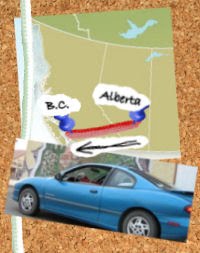






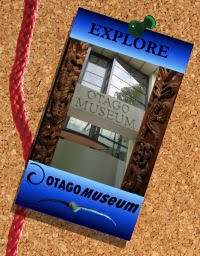



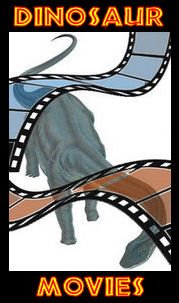






2 comments:
interesting chronicle!
I didn't imagine it was lichen in spite of the fact that I had seen something similar some time ago. LOL
Awesome find, Traum....even if they are inarticulate. Reminds me of the Dig I COULD have accompanied Horner on. Sadly, I missed the deadline...so I missed my chance to go prospecting.
ALthough, now that Dinorider mentions it, I thought those lichen covered fossils were orange peels for awhile. LOL!! Now we know why.
Post a Comment